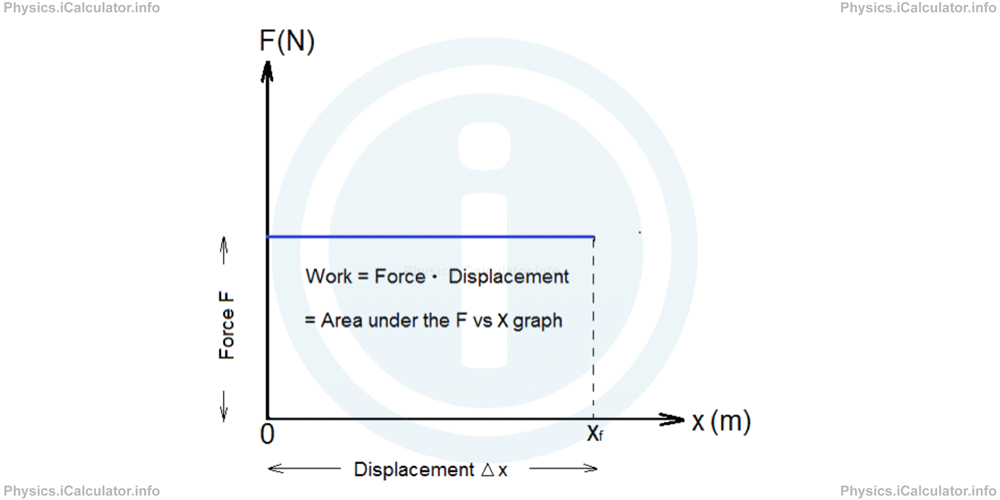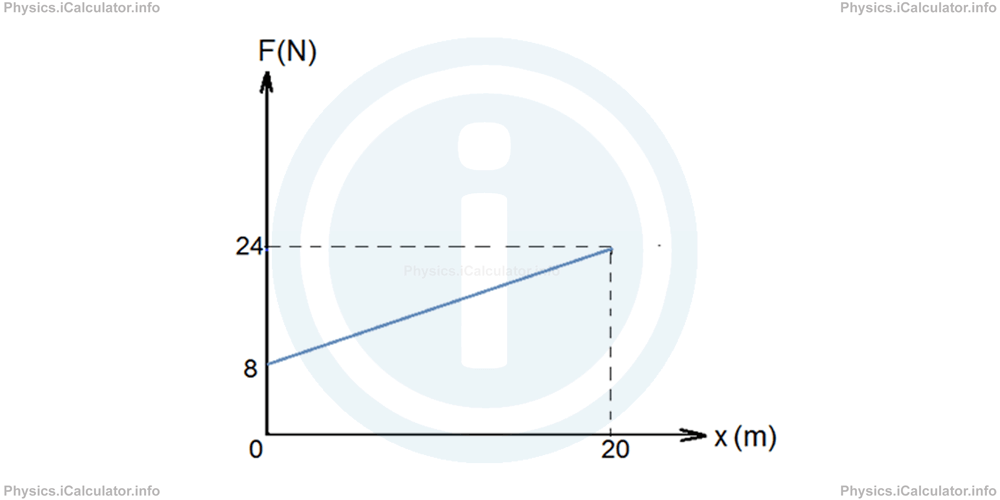Menu
Physics Lesson 5.1.4 - The graphical representation of Work
Please provide a rating, it takes seconds and helps us to keep this resource free for all to use
Welcome to our Physics lesson on The graphical representation of Work, this is the fourth lesson of our suite of physics lessons covering the topic of Work and Energy. Types of Energy, you can find links to the other lessons within this tutorial and access additional physics learning resources below this lesson.
The graphical representation of Work
First, let's consider a constant force F newtons acting on an object. As a result, the object moves horizontally by Δx meters. If we take the initial position xi = 0, the final position of the object will be xf = Δx (as Δx = xf - xi).
Thus, if we put the position x at the horizontal axis and the force F at the vertical one, we will obtain the following graph:

Thus, it is obvious that Work represents the magnitude of the area under the Force vs Position graph (here, the area of a rectangle). This method for calculating the Work is particularly helpful if the force is not constant. In such cases, we simply calculate the abovementioned area and the result represents the amount of Work in Joules. Look at the example below:
Example
What is the work done by an object if the Force vs Position graph of the process is shown below?

Solution
From the graph, we can see that the initial force used was 8N. This force constantly increased up to 24N during the 20m of displacement.
- One method for calculating the Work would be finding first the average force < F > = (8N + 24N) / 2 = 16N and then using the equation W = < F > ∙ Δx = 16N ∙ 20m = 320J.
- The other method (graph method) consists on calculating the area A of the trapezium formed by the graph and the two axes. Giving that the Area of trapezium is calculated by the equation:
where B and b are the large and the small parallel sides of the trapezium respectively (here B = 24N and b = 8N) and h is its height (here h = 20m). Thus, substituting these values, we obtain
= 32N × 20m/2
= 640J/2
= 320J
As you can see, the result obtained in both cases is the same.
You have reached the end of Physics lesson 5.1.4 The graphical representation of Work. There are 5 lessons in this physics tutorial covering Work and Energy. Types of Energy, you can access all the lessons from this tutorial below.
More Work and Energy. Types of Energy Lessons and Learning Resources
Whats next?
Enjoy the "The graphical representation of Work" physics lesson? People who liked the "Work and Energy. Types of Energy lesson found the following resources useful:
- Graphic Feedback. Helps other - Leave a rating for this graphic (see below)
- Work, Energy and Power Physics tutorial: Work and Energy. Types of Energy. Read the Work and Energy. Types of Energy physics tutorial and build your physics knowledge of Work, Energy and Power
- Work, Energy and Power Revision Notes: Work and Energy. Types of Energy. Print the notes so you can revise the key points covered in the physics tutorial for Work and Energy. Types of Energy
- Work, Energy and Power Practice Questions: Work and Energy. Types of Energy. Test and improve your knowledge of Work and Energy. Types of Energy with example questins and answers
- Check your calculations for Work, Energy and Power questions with our excellent Work, Energy and Power calculators which contain full equations and calculations clearly displayed line by line. See the Work, Energy and Power Calculators by iCalculator™ below.
- Continuing learning work, energy and power - read our next physics tutorial: Kinetic Energy
Help others Learning Physics just like you
Please provide a rating, it takes seconds and helps us to keep this resource free for all to use
We hope you found this Physics lesson "Work and Energy. Types of Energy" useful. If you did it would be great if you could spare the time to rate this physics lesson (simply click on the number of stars that match your assessment of this physics learning aide) and/or share on social media, this helps us identify popular tutorials and calculators and expand our free learning resources to support our users around the world have free access to expand their knowledge of physics and other disciplines.